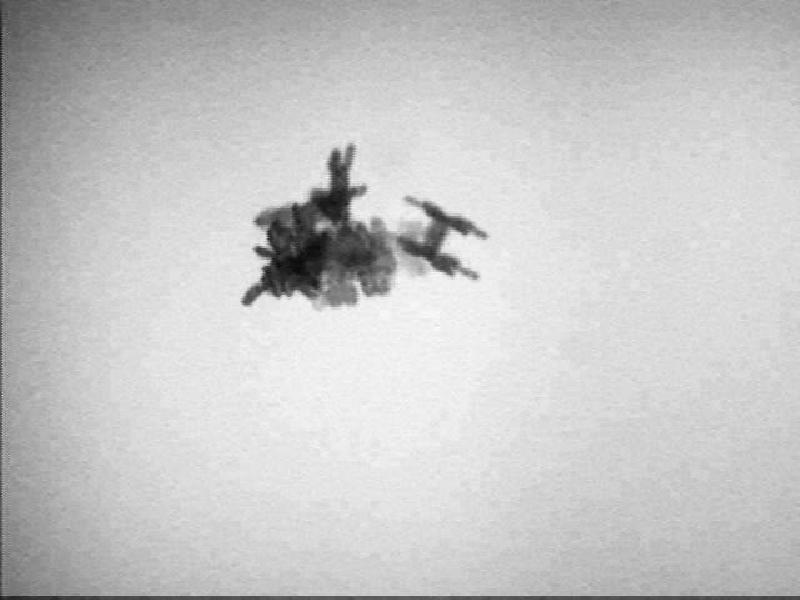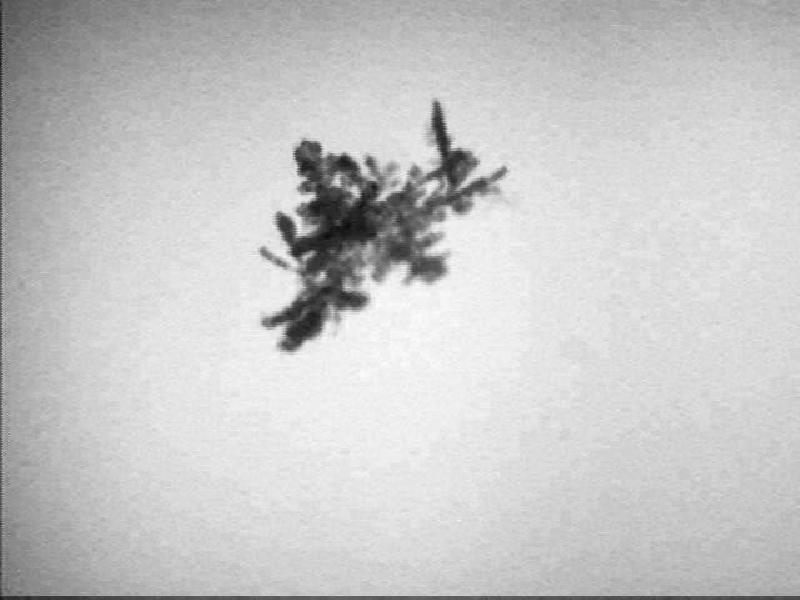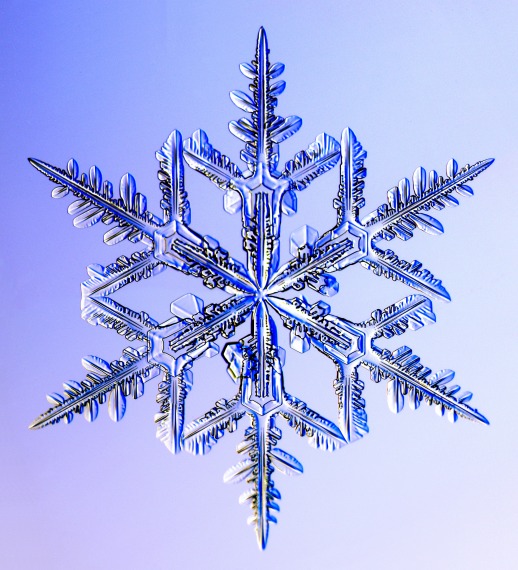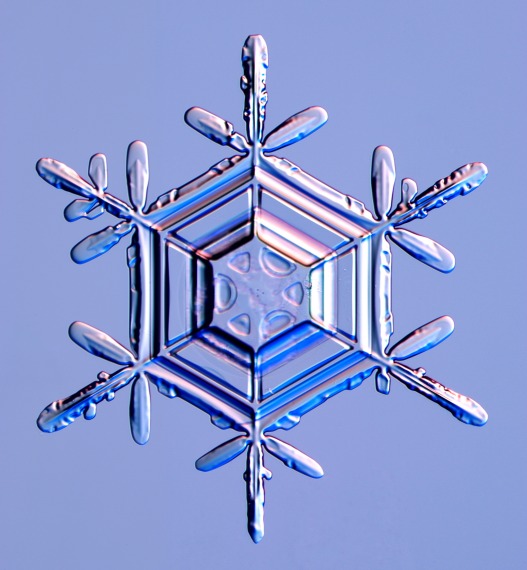
photographed as it fell
Alta Ski Area on March 6, 2011
Photo Courtesy & Copyright 2011
Tim Garrett, University of Utah
Alta Snowflake Showcase
As winter draws to a close, I’d like to take a moment to reflect on the amazing weather phenomenon that is a snowflake. When winter weather dumps inches of snow on us, it’s easy to overlook the tiny works of art, those intricate and delicate snowflakes, which make up the storm.
Snowflakes – or to use a more scientific term, snow crystals – come in a variety of different shapes including long, thin needles, flat hexagonal plates, columns, and irregularly-shaped pellets called graupel. The International Snow Classification System recognizes ten different shapes in all, only one of which is the traditional snowflake image. The classic six-armed snowflake shape is called a ‘stellar dendrite’ by scientists.
When teaching programs about snow, someone inevitably asks me, “Is it really true that no two snowflakes are alike?” As far as I can tell, the answer is, well, ‘maybe’, and here’s why.

photographed as it fell
Alta Ski Area
March 6, 2011
Photo Courtesy & Copyright 2011
Tim Garrett, University of Utah
Alta Snowflake Showcase
Three things are needed to form these intricate crystals, and the first two are fairly obvious: water, and temperatures below freezing. The third item is a little more inconspicuous. Water cannot condense and freeze all on its own. Every snowflake needs a piece of atmospheric dust or salt at its core. This particle is referred to as a ‘nucleating agent,’ and it attracts water molecules which then condense and begin to freeze. From there, a snowflake’s overall shape is determined by a number of other variables including the atmospheric temperature, the amount of available moisture, wind speed, and mid-air collisions with other snowflakes.
To add more complexity, consider that each individual snowflake contains somewhere on the order of 10 quintillion water molecules. That’s ten with eighteen zeros behind it. While the way these molecules bind to each other is dictated by the laws of physics, the sheer number of ways in which 10 quintillion water molecules can arrange themselves as they freeze into place is mind boggling. But then again, how many snowflakes do you think fall in the typical March snowstorm in Utah? A lot. One scientist has estimated that the number of individual snowflakes that have fallen on Earth in the planet’s history is ten with 34 zeros behind it. In all of those snowflakes is it possible that two are exactly alike? Yeah, maybe… but good luck finding them!

Kenneth Libbrecht, Caltech University
SnowCrystals.com
For more information and some beautiful snowflake photographs, please visit our website at www.wildaboututah.org. Thank you to the Rocky Mountain Power Foundation for supporting the research and development of this Wild About Utah topic.
For the Stokes Nature Center and Wild About Utah, this is Andrea Liberatore.
Credits:
Photos: Courtesy Tim Garrett, University of Utah,
Kenneth Libbrecht, Caltech University
Text: Andrea Liberatore, Stokes Nature Center
Additional Reading:
Halfpenny, J.C and Ozanne, R.D. 1989. Winter: An Ecological Handbook. Boulder, CO: Johnson Books, https://www.amazon.com/Winter-Ecological-Handbook-James-Halfpenny/dp/1555660363

Kenneth Libbrecht, Caltech University
SnowCrystals.com
Gosnell, Mariana. 2007. Ice: the Nature, the History, and the Uses of an Astonishing Substance. Chicago, IL: The University of Chicago Press, https://www.amazon.com/Ice-Nature-History-Astonishing-Substance/dp/0679426086
Libbrecht, Kenneth .1999. A Snowflake Primer: the basic facts about snowflakes and snow crystals. https://www.its.caltech.edu/~atomic/snowcrystals/primer
/primer.htm

Kenneth Libbrecht, Caltech University
SnowCrystals.com
